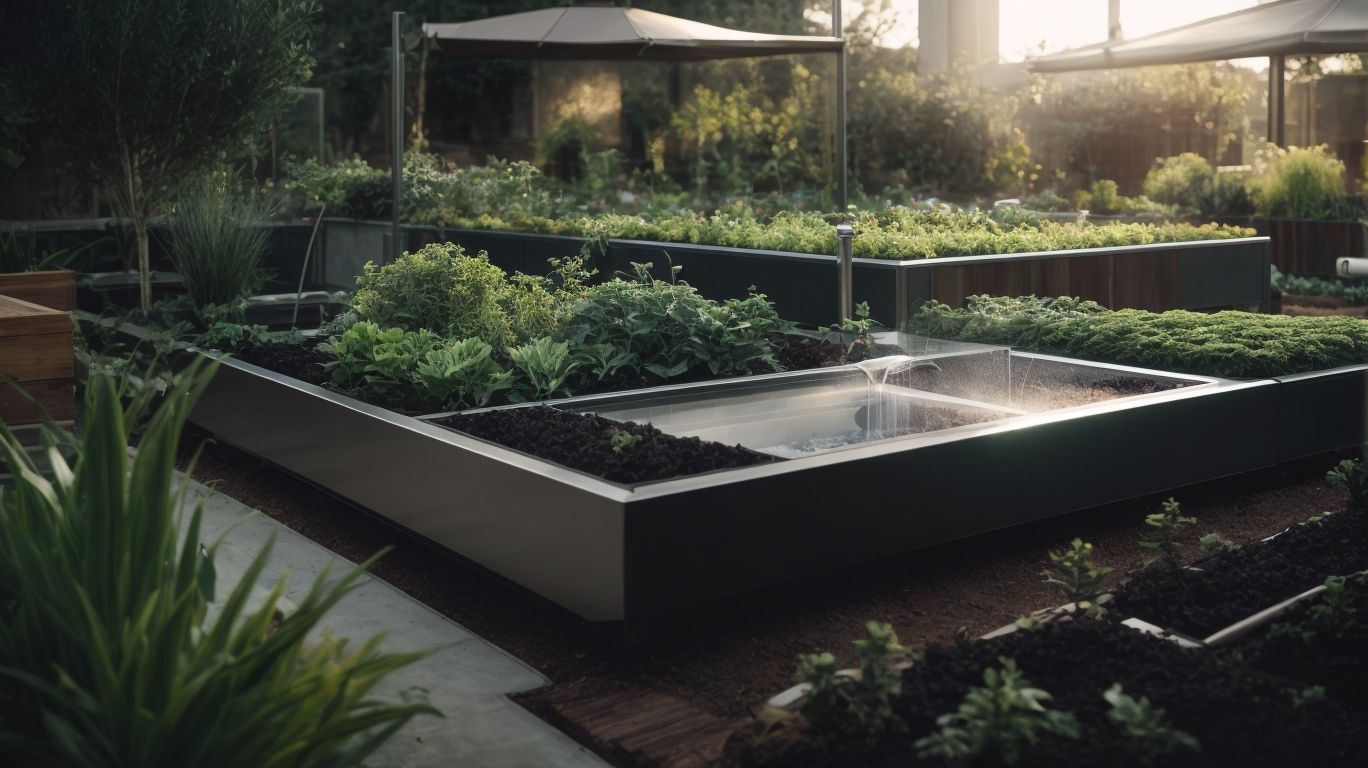Hydroponic gardening is a modern and efficient way of growing plants without the use of soil. It’s a method that has gained popularity in recent years due to its numerous advantages over traditional soil-based gardening. In this article, we’ll delve into the world of hydroponic gardening, exploring how it works, its benefits, the types of plants that can be grown using this method, the different types of hydroponic systems, how to set up a hydroponic garden, and common misconceptions about this innovative approach to gardening.
Whether you’re a seasoned gardener looking to expand your knowledge or a beginner eager to explore new gardening techniques, this article will provide valuable insights into the world of hydroponic gardening and its potential to revolutionize the way we grow plants.
Key Takeaways:
What is Hydroponic Gardening?
Hydroponic gardening, also known as soilless farming, is a method of growing plants without soil, using nutrient solutions in a water solvent.
The concept originated from the research conducted by Francis Bacon, Julius von Sachs, and Wilhelm Knop in the 17th century. It has since evolved to become a popular and efficient alternative to traditional farming, offering controlled environments that optimize plant growth. Hydroponic systems have gained momentum due to their reduced water usage and potential for year-round cultivation, making them increasingly relevant to modern agricultural practices.
The transition from soil-dependent farming has paved the way for creative adaptations and efficient systems, contributing to the sustainability and productivity of agricultural practices.
How Does Hydroponic Gardening Work?
Hydroponic gardening operates by providing plants with the necessary nutrients through a water-based solution, utilizing a controlled environment within hydroponic greenhouses. The technology controls factors such as water, light, temperature, and humidity to optimize plant growth and yield.
The controlled environment in hydroponic gardening involves intricate climate control measures to ensure the ideal conditions for plant growth. This includes advanced systems for regulating the temperature and humidity levels, and often utilizing artificial lighting to supplement natural sunlight. Water management plays a crucial role in hydroponics, with precise monitoring and replenishment of the nutrient solution to maintain optimal nutrient levels for the plants’ development.
What Are the Advantages of Hydroponic Gardening?
Hydroponic gardening offers numerous advantages over traditional soil-based farming, including efficient water usage, controlled environmental conditions, and maximized space utilization. The environmental benefits of hydroponics align with the sustainability goals outlined by organizations such as the United Nations Food Agriculture Organisation (FAO). Berkshire Hathaway’s investment in hydroponic technology showcases its potential for widespread adoption.
Saves Water
One of the primary advantages of hydroponic farming is its efficient water usage, as the system recirculates the nutrient solution, minimizing water wastage. The technology ensures that plants receive an optimal balance of nutrients and hydration, leading to enhanced growth and yield.
Hydroponic gardening prioritizes water conservation by maintaining a closed-loop nutrient circulation system, where the nutrient solution is continuously reused, drastically reducing water consumption compared to traditional soil-based farming.
The precise hydration management in hydroponics enables plants to uptake water and nutrients directly, eliminating wastage through evaporation or run-off while ensuring that every drop of water contributes to plant growth.
The integration of technology in hydroponic systems, such as automated monitoring and advanced irrigation methods, optimizes water usage, preventing overwatering and providing just the right amount of hydration for each plant, thus contributing to sustainable water management in agriculture.
Eliminates Soil-Borne Diseases
By eliminating the use of soil, hydroponic farming effectively eliminates the risk of soil-borne diseases, creating a healthier and more controlled environment for plant growth. This approach reduces the need for chemical pesticides and fungicides, aligning with sustainable agricultural practices.
Hydroponic gardening fosters an especially suitable environment for plant health, with a precisely controlled nutrient solution ensuring optimal plant nutrition. The absence of soil in this method minimizes the risk of contamination, providing a barrier against soil-borne pathogens and pests. The reduced reliance on chemical treatments, such as herbicides and fertilizers, makes hydroponically-grown produce a safer option for consumers. This innovative approach also allows for increased productivity and efficient use of water, making it a viable solution for sustainable agriculture.
Allows for Year-Round Gardening
The controlled environment provided by hydroponic systems allows for year-round gardening, independent of external climate conditions.
This capability not only enables continuous cultivation but also give the power tos farmers to grow crops in regions where traditional soil-based farming may not be feasible due to adverse weather conditions. The technology-driven climate control of hydroponic systems ensures that plants can thrive in optimal conditions regardless of the external climate, leading to consistent and high-quality crop yields.
With the ability to regulate temperature, humidity, and light levels, hydroponic systems offer the potential for continuous crop production and significantly reduce the impact of seasonal limitations on agricultural yield.
Requires Less Space
Hydroponic farming requires significantly less space compared to traditional soil-based agriculture, making it suitable for urban and space-constrained environments. The vertical farming approach further maximizes space utilization, leading to higher crop yields within limited areas.
Vertical farming, a key component of hydroponic systems, involves stacking layers of crops upwards, using specialized techniques and equipment to ensure optimal growth conditions. This space-saving method allows for the cultivation of multiple crop types within a compact area.
- By capitalizing on the vertical dimension, hydroponic farms make efficient use of available space while boosting productivity.
- The controlled environment in hydroponic systems optimizes resource use, such as water and nutrients, contributing to sustainable and high-yielding agriculture. This is particularly beneficial for areas with limited arable land or unfavorable soil conditions.
- The technology-driven nature of hydroponics enables precise monitoring and management of plant growth, ensuring consistent and healthy crop development.
Reduces Weeding and Pests
The absence of soil in hydroponic systems reduces the prevalence of weeds and soil-based pests, thereby minimizing the need for manual weeding and pesticide application. This approach contributes to cleaner and more sustainable crop cultivation practices.
Hydroponic farming, with its controlled nutrient solution and sterile growing medium, provides an environment that is inhospitable to many common pests and weeds that depend on soil for survival. As a result, the reliance on pesticides is significantly reduced, leading to healthier, more natural produce.
The minimized weed growth allows for more efficient use of resources, as nutrients and water are directed solely to the crops, enhancing their growth and yield.
What Types of Plants Can Be Grown in a Hydroponic System?
A diverse range of plants can be successfully cultivated in a hydroponic system, including herbs such as basil, coriander, mint, thyme, and sage. This versatile approach extends to the growth of various vegetables, fruits, and ornamental plants.
Hydroponic systems offer an innovative way to cultivate plants in a soilless environment, providing optimal conditions for their growth. Vegetables like lettuce, tomatoes, cucumbers, and peppers flourish in these setups, yielding high-quality produce. Fruits such as strawberries and melons can be effectively grown using hydroponics, showcasing the adaptability of this method across different plant types.
What Are the Different Types of Hydroponic Systems?
Hydroponic farming encompasses various types of systems, each with distinct mechanisms and advantages. The categories include deep water culture, drip system, nutrient film technique, ebb and flow system, and wick system, combining ingenuity and efficiency to support plant growth.
Deep Water Culture
The deep water culture system suspends plant roots in a nutrient-rich solution, ensuring continuous access to water and essential nutrients. This method relies on technology for oxygenation and water circulation to facilitate optimal plant growth.
Deep water culture hydroponics involves the use of a reservoir filled with a nutrient solution, where plants’ roots are suspended. The solution is oxygenated using pumps or air stones to provide the roots with the essential oxygen they require for respiration. The water needs to circulate continuously to ensure uniform distribution of nutrients to all the plants in the system. Monitoring and maintaining water quality is crucial, accomplished through technologies such as pH and EC meters, and appropriate nutrient dosing systems to adjust and regulate the nutrient levels.
Drip System
The drip system administers water and nutrient solutions directly to plant roots through a network of tubes and emitters, optimizing resource distribution and minimizing wastage. This method leverages technology for precise control and efficient nutrient delivery.
By utilizing pressure regulators, flow meters, and control valves, the drip system ensures uniform distribution of water and nutrients to individual plants, promoting their optimal growth. The integration of monitoring sensors and automated controls allows for real-time adjustments, enhancing the system’s adaptability to changing environmental conditions.
This technology-driven approach in hydroponic farming not only conserves water but also minimizes the leaching of nutrients, resulting in a more sustainable and eco-friendly agricultural practice. The use of specialized software and remote access capabilities enables farmers to remotely manage the system, maximizing their operational efficiency while reducing manual labor.
Ebb and Flow System
The ebb and flow system alternates between flooding and draining the plant roots with nutrient solutions, promoting oxygenation and nutrient absorption. This method utilizes technology to regulate the cyclic irrigation process and enhance plant growth.
The periodic flooding ensures that the root zone is adequately oxygenated through the influx of air when the solution drains out. This cycle also facilitates the efficient uptake of essential nutrients by the plant roots, promoting robust growth and development.
Through the integration of sensors and timers, technology enables precise control over the ebb and flow cycles, optimizing the water levels to meet the specific needs of different plant species.
Nutrient Film Technique
The nutrient film technique involves a continuous flow of nutrient solution along the base of plant roots, creating a thin film for consistent hydration and nutrient uptake. Technology plays a crucial role in maintaining the solution flow and optimizing plant nutrition.
By utilizing hydroponic systems and automated irrigation tools, growers can ensure a carefully calibrated distribution of nutrients and water to the root system. Sophisticated sensors and controls monitor and adjust the solution flow, preventing any stagnation or uneven distribution that could jeopardize plant health.
The integration of software and sensors enables precise adjustments to the nutrient solution’s composition, aligning with the specific needs of different plant species and growth stages. This level of technical control ensures optimal nutrient delivery, ultimately sustaining the health and productivity of hydroponically grown plants.
Wick System
The wick system utilizes capillary action to transport water and nutrients from a reservoir to the plant roots, ensuring consistent hydration and nutrient supply. This method employs simple yet effective technology for reliable resource distribution.
The wick system in hydroponic farming harnesses the natural phenomenon of capillary action, where water and nutrients move through specialized materials, such as cotton or nylon wicks, to reach the plants’ root systems. This technological simplicity allows for a self-regulated uptake of water and nutrients, maintaining a balanced and optimal environment for plant growth.
By capitalizing on the principles of capillarity, the wick system facilitates consistent hydration within the root zone, significantly reducing the risk of over or under-watering. This method ensures a steady flow of nutrient supply, promoting healthy plant development without the need for complex irrigation systems.
How to Set Up a Hydroponic Garden?
Setting up a hydroponic garden requires careful consideration of the selected system, suitable growing medium, and optimal technology integration. Popular growing mediums include perlite, pumice, vermiculite, rice husk, wood fiber, and rock wool.
When establishing a hydroponic system, it’s essential to select a suitable option such as nutrient film technique (NFT), deep water culture (DWC), or aeroponics, each with its own advantages and requirements.
The chosen growing medium greatly impacts the overall success of the system, with perlite and pumice providing excellent aeration and drainage, while vermiculite and rock wool offer good water retention and support for plant roots.
What Are the Common Misconceptions About Hydroponic Gardening?
Hydroponic gardening is often associated with misconceptions regarding its technological complexity, environmental impact, and potential limitations.
One common misconception about hydroponic gardening is that it requires advanced technological knowledge and complex equipment. In reality, hydroponic systems can be simple and accessible, suitable for both beginners and experienced gardeners. There is a misconception surrounding its environmental impact, with some believing that it is not as sustainable as traditional soil-based methods. Hydroponic gardening can actually conserve water and reduce the need for harmful pesticides and herbicides, promoting environmental sustainability. There are misinterpretations about climate control in hydroponic systems, as some may believe that maintaining optimal conditions is challenging. Yet, advancements in technology have made it easier to monitor and adjust climate variables to ensure optimal plant growth.
Frequently Asked Questions
What is hydroponic gardening and how does it differ from soil-based plant growth?
Hydroponic gardening is a method of growing plants without soil, using a nutrient-rich water solution. Unlike traditional soil-based plant growth, hydroponics relies on water as the main source of nutrients for plants.
What are the advantages of hydroponic gardening over traditional soil-based plant growth?
Hydroponic gardening offers several advantages over soil-based plant growth, including faster growth rates, higher yields, and more control over nutrient levels. It also eliminates the need for weeding, tilling, and other labor-intensive tasks associated with traditional gardening methods.
Is hydroponic gardening suitable for all types of plants?
Yes, hydroponic gardening can be used to grow a wide variety of plants, including vegetables, herbs, and even flowers. Some plants may require specific nutrient levels or growing conditions, but with the proper setup, hydroponics can support the growth of almost any plant.
How does hydroponic gardening benefit the environment?
Hydroponic gardening uses significantly less water than traditional gardening methods because the water is recirculated through the system. It also eliminates the need for harmful pesticides and herbicides, making it a more sustainable and eco-friendly option for plant growth.
Are there any disadvantages to hydroponic gardening?
While hydroponic gardening has many advantages, it does require a higher initial investment for equipment and setup. It also requires more monitoring and maintenance to ensure optimal nutrient levels and prevent diseases or pests. Additionally, some people may miss the tactile experience of traditional gardening with soil.
Can hydroponic gardening be done indoors?
Yes, hydroponic gardening can be done indoors, making it a great option for those who have limited outdoor space or live in areas with harsh climates. Indoor hydroponic systems can also be set up with grow lights to provide the necessary light for plant growth.


